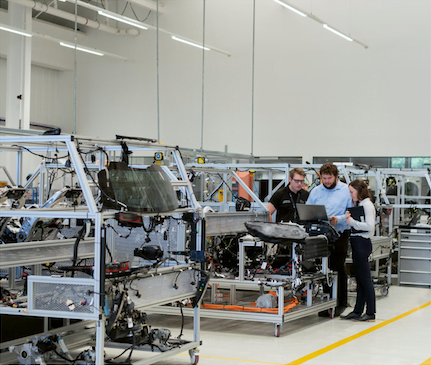3D printing silicone moulds is a brand new manufacturing process that is perfect for rapidly testing product ideas and also low volume productions. In the 3D printing industry, silicone is pretty new. However, this is not to do with any lack of demand. Silicone is actually one of the most popular material choices for a huge range of industries and applications.
The reason is that it took some time for silicone 3D printing to become available as it took quite some time to finish the technology needed. This is mainly down to the silicone’s very high viscosity. This meant that the material was too difficult to print into precise shapes.
3D printing silicone is most commonly done using liquid silicone rubber (LSR), this is because of its high stability and brilliant temperature range.
Advantages Of 3D Printed Silicone
3D printing is a phenomenal piece of technology that can have so many benefits for a range of different industries. Silicone 3D printing is the same, there are so many benefits that come with being able to 3D print the material. These are:
New Levels Of Customisation
3D printing is such incredibly advanced technology that it opens up whole new possibilities that we could never have previously thought of. Silicone is used by a huge range of different industries that could benefit greatly from such vast customisation possibilities.
Before 3D printing, liquid silicone rubber was already very commonly used in the healthcare industry. However, 3D printing allows for completely new customisation of so many different applications within the industry. It is the same in all the industries in that silicone is commonly used. The new opportunity for the creation of silicone products is huge.
The silicone 3D printing process also allows multiple variations of a design to be printed at the same time making the whole production process far more efficient and streamlined.
Quick Lead Times
In most industries, lead times are extremely important. The introduction of silicone 3D printing can help speed up lead times drastically. This is for a number of reasons. No traditional tooling is required in the production of the material, it is simply all technology meaning that the process can be done far quicker.
Another reason for the quick lead times is the fact that models for parts can be speedily transferred into shells that are both printed and moulded. This again would help to speed up the manufacturing process and in turn speed up lead times.
Huge Temperature Range
One of the main benefits of silicone that has been manufactured traditionally is its incredibly impressive temperature range. This is actually what makes it so attractive for such a huge range of industries. For this reason, it would be an unwise decision to change to 3d printing the silicone material if it would harm such an important benefit.
Well, it does not, the printed silicone can still withstand both extreme cold temperatures and extremely hot temperatures. The material can actually withstand temperatures ranging from -55°c to 200°c. These are temperatures far more extreme than most polymers have the ability to withstand.
Minimal Costs
Costs have always been somewhat of a disadvantage to silicone rubber, however, 3D printed silicone is actually on the cheaper side of things. This is because there is a reduced tooling cost due to the fact that there is no need for any traditional tooling in the printing process. Tooling can be one of the biggest costs during the production of the material, so taking that away can save a huge amount of money.
In addition to this, the faster lead times and the ability to be printing multiple variations of a design at one time. The printing process is also incredibly precise and reliable so you have to worry less about wasted material and costly mistakes.
Disadvantages Of 3D Printing Silicone
As with all materials and especially all new technologies, there are some disadvantages that you should be aware of. These disadvantages include:
Accessibility
As we have previously mentioned, the 3D printing of silicone is a relatively new thing. For this reason, it is extremely hard to come across and many manufacturers do not have access to a 3D printing machine. Only a handful of companies across the UK offer this service as the hardware and the materials needed to complete the process are very hard to come across.
Return To Liquid State Is Not Possible
In any process where you are using liquid silicone rubber, once it has dried there is no way of returning it back to its original liquid form. This means that you have to be absolutely sure that your project has been planned perfectly. Once the process has been completed there is no way of remoulding, changing, transforming or reusing the material in any way.
Summary
3D printing silicone is a relatively new technology, for this reason, there are bound to be some disadvantages and accessibility issues. However, as the technology develops over time these disadvantages will begin to be addressed and the advantages will continue to become greater.
It is a technology that can be extremely useful if you are able to gain access to a company that offers this service. Here at Viking Extrusions, we are fortunate enough to have silicone 3D printing technology so get in touch with us today to discuss this service.

